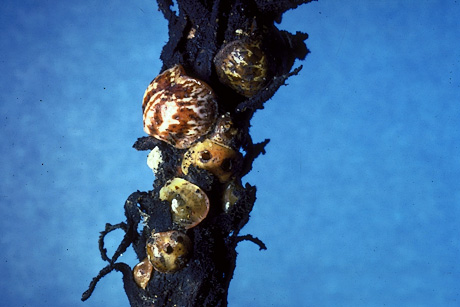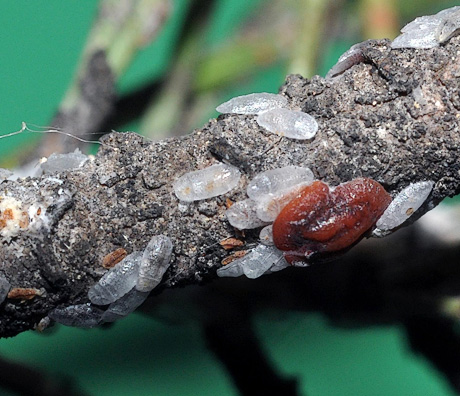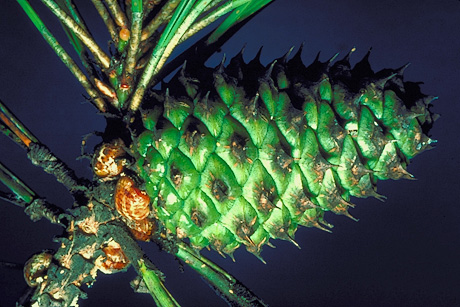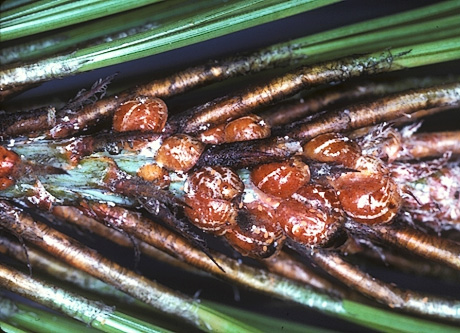
Striped Pine Scale
Damage caused by striped pine scale
Striped Pine Scale damages many conifers in Colorado. It prefers to feed on scotch pine, but will also feed on pinyon, austrian and lodgepole pine. Feeding removes sap from the tree causing decreased vigor, needle drop and dieback, and increaes susceptibility to disease and attacks by other pests. Heavy infestations can even kill branches. The striped pine scale females excrete a sticky honeydew that attracts ants, bees and wasps. Mold growing on the honeydew can give the tree a grayish cast.
 R. Scott Cameron, Advanced Forest Protection, Inc., Bugwood.org
R. Scott Cameron, Advanced Forest Protection, Inc., Bugwood.org
How to identify striped pine scale
Large numbers of ants, bees and wasps or a dark gray sooty mold may be caused by the honeydew excreted by the striped pine scale.
Eggs are laid in clusters of hundreds under the mature female scale. Eggs hatch into very active orange to brown nymphs or crawlers.
The adult female striped pine scale is hemispherical or helmet-shaped, wrinkled, up to 1/4" in diameter, light brown to reddish brown with dark brown to black markings and cream colored stripes on the back. They are always found attached to twigs at the base of needles. They have a dark red blood. The adult males are much smaller and have wings.
 Eric R. Day, Virginia Polytechnic Institute and State University, Bugwood.org
Eric R. Day, Virginia Polytechnic Institute and State University, Bugwood.org
Life cycle of the striped pine scale
The striped pine scale overwinters as females, usually fertilized immature females, but some are mature females. These females start feeding in early spring, start laying eggs in May and early June, which hatch into nymphs or crawlers starting in early June. The crawlers move around the tree for a couple days, then settle down and molt, losing their legs and mobility. Female striped pine scales stay on the twig bark at the base of needles, and males move to the needles. They mate in late summer, then lay eggs, which hatch and overwinter.
 William M. Ciesla, Forest Health Management International, Bugwood.org
William M. Ciesla, Forest Health Management International, Bugwood.org
How to control striped pine scale
Although natural predators eat many striped pine scale insects, they are not a very effective control for infested trees. Striped pine scale populations can be reduced by spacing trees far enough apart that crawlers can't move from one tree to another, and by removing infested branches.
Horticultural oils may be effective if applied in early Fall or spring, Insecticides are best sprayed in early June on the striped pine scale and systemic insecticides are best applied to the soil near the tree in the spring.
 R. Scott Cameron, Advanced Forest Protection, Inc., Bugwood.org
R. Scott Cameron, Advanced Forest Protection, Inc., Bugwood.org
Other resources
 United States National Collection of Scale Insects Photographs Archive, USDA Agricultural Research Service, Bugwood.org
United States National Collection of Scale Insects Photographs Archive, USDA Agricultural Research Service, Bugwood.org





